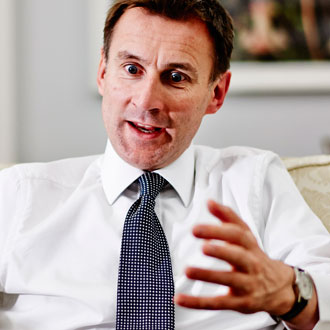GP numbers have decreased in first year of NHS rescue package

The number of full-time-equivalent GPs has decreased in the first year since NHS England released its rescue package designed to alleviate the GP recruitment crisis, official figures have revealed today.
The provisional figures, released by NHS Digital, show that there has been an increase of 36 in FTE GP numbers excluding locums in the first three months of 2017, as the reporting of locum figures has changed in the meantime.
However, the figures also reveal that the number of FTE GPs has fallen by 542 since NHS England released its GP Forward View in April last year, designed to meet health secretary Jeremy Hunt’s target of 5,000 extra FTE GPs by 2020.
It also means that numbers have actually decreased since the target was set in September 2015 – meaning the Government now has to recruit 5,220 FTE GPs to meet its target.
GP leaders said that the figures ’demonstrate the failure of politicians’ to give support to GPs.
These are the first figures a year on from the release of the GP Forward View. The plans developed by NHS England involved an uplift in total GP funding of £2.4bn a year by 2020, and a separate package of £500m to implement immediate measures to support general practice.
This included measures to incentivise GPs to move to the areas hardest hit by the recruitment crisis, to incentivise GPs to stay in practice if they were considering leaving, and to smooth the process to re-enter UK general practice.
But the latest figures suggest that these measures have so far failed.
The total number of FTE GPs decreased from 34,914 in March 2016 to 34,372 in March 2017.
This comes after Pulse revealed that the number of GP vacancies has increased in the past year, with 12% of all positions now vacant, and one in five practices giving up the search for a new GP.
Dr Krishna Kasaraneni, BMA GP Education, Training and Workforce lead, said: ’These figures demonstrate the failure of politicians to uphold their pledges to deliver the GPs necessary to provide the number of appointments and sustainable service that patients deserve. The overall number of GPs working in England has dropped since 2015, which leaves the NHS a considerable distance short of the current targets for the GP workforce. There is little prospect of the promised 5,000 additional GPs materialising anytime soon.
’This continued workforce crisis has left many GP practices unable to properly staff their surgeries at a time when local services are struggling to cope with rising patient demand and flatlining budgets. A recent BMA survey showed that a third of GP practices had vacancies left unfilled for a year.
’The next government must ensure that we have a properly staffed service that can meet the needs of patients.’
RCGP chair Professor Helen Stokes-Lampard said: ‘Of course any rise in GP numbers is encouraging, and we are seeing a small rise since the last figures in December – but we are still way off GP Forward View target, and indeed since September last year these figures show a drop of 381 GPs, which is a serious concern…
‘Workload in general practice is soaring – 16% over the last seven years according to the latest research – yet our workforce has not risen in step, and is now actually reducing. This isn’t acceptable.’
How GP numbers have decreased in past 12 months
| September 2015 | March 2016 | September 2016 | December 2016 (provisional) | March 2017 (provisional) | |
|---|---|---|---|---|---|
| Full-time-equivalent GPs | 34,592 | 34,914 | 34,495 | 34,050 | 34,372 |
| GP providers | 19,995 | 19,034 | 21,163 | 20,835 | 20,702 |
| Salaried/other GPs | 6,826 | 6,687 | 7,292 | 7,300 | 7,390 |
| GP registrars | 4,719 | 4,909 | 5,273 | 5,183 | 5,250 |
| GP retainers | 64 | 68 | 72 | 69 | 81 |
| GP locums | 537 | 601 | 692 | 663 | 949 |
Source: NHS Digital
Pulse October survey
Take our July 2025 survey to potentially win £1.000 worth of tokens











